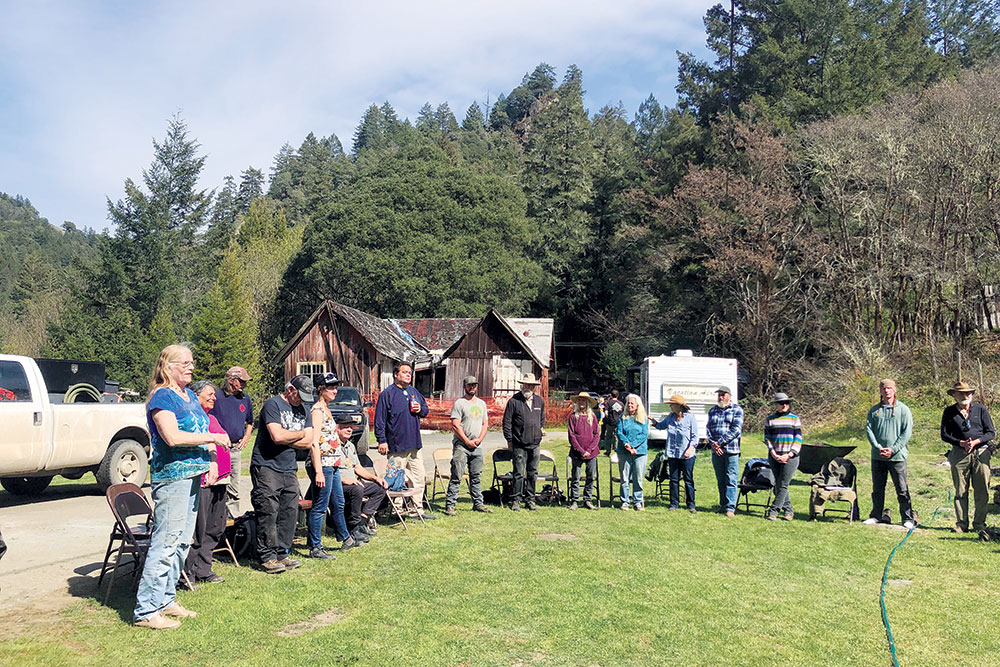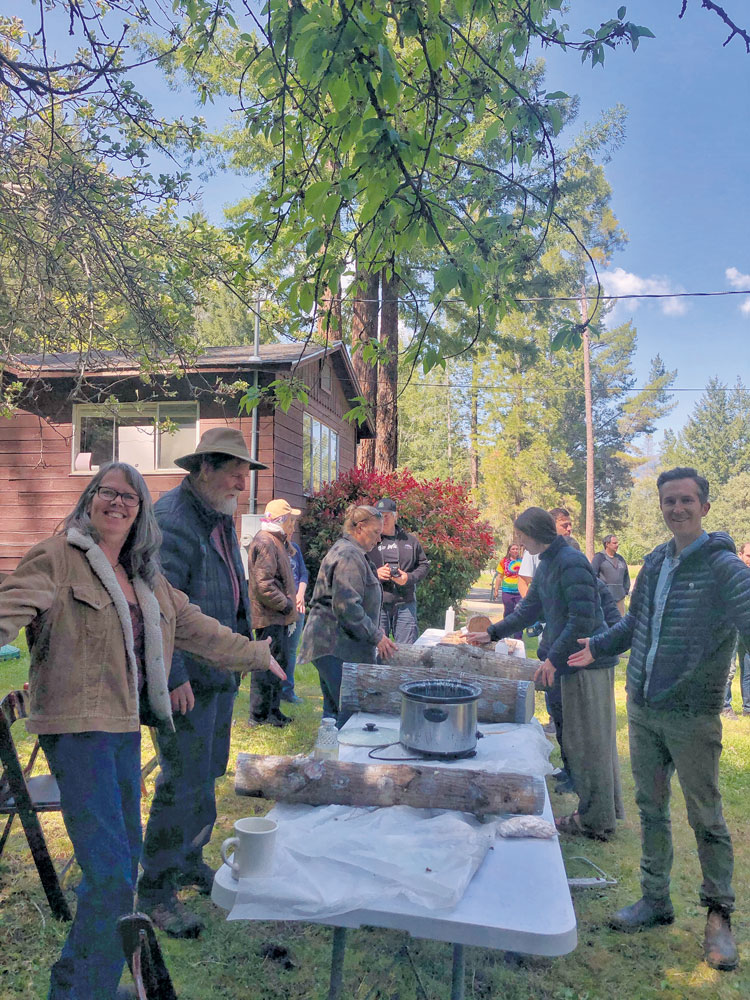Defining and Working Toward Forest Health, Utilizing Wood When It’s Cleared, and Regenerating Community

Reviewing a Community Event Series
Northern Mendocino Ecosystem Recovery Alliance
By Cheyenne Clarke
The Eel River Recovery Project and Northern Mendocino Ecosystem Recovery Alliance have concluded their Spring community event series, which was made possible by the Trees Foundation Cereus Grant. Here’s what happened:
Forest Health and Fire Resilience Workshop
On April 3rd we kicked it off at Tan Oak Park with hugelkultur and biochar demonstrations, community conversation, and ceremony offered by Wailaki Elder, Ron Lincoln, Sr. As our friends at Happy Day Farms would say, the event was a great success! We were grateful for Ron Lincoln’s blessing—it felt like an ancestral omen for the work we are doing, the alliance we are building, and the mission we are serving. Our kick-off event filled our sails with wind and set the course for the events that followed.
The ongoing question of this series was, “What do we do with the wood?” When we perform forest health work and fuel reduction there is a tremendous amount of wood material to utilize. Hugelkultur, biochar, fir pole harvest, and mushroom logs are all creative ways to utilize forest material, stack functions, and reawaken our relationship to the nutrient cycle.
Thinning and Skinning
On April 10th we held an event in Leggett, “Thinning and Skinning”, where we explored the process of selecting, falling, and peeling poles in tandem with fuel-abatement work. Poles can be used for furniture, tipi poles, and frame building. At this event the participants invoked our collective responsibility for long-term forest management.
A Buddhist Perspective and Mushroom Culture Workshop
On April 23rd we gathered at Gomde California with Fungaia Farm for a mushroom log presentation and workshop. Gathering at the Gomde Buddhist center brought our focus to the concept of interconnectedness of the forest and community. We recognize that the work we do within, and the work we do in the forest, are both vitally important to serving our mission.

Planning for Fire: A Community Organizing Event
On May 14th we gathered in Woodman Canyon to discuss defensible space and shaded fuel breaks with the focus of community organizing. This event continued to broaden our network and reminded us that our goal of building a forest health workforce is central to our regenerative vision.
Forest Health Management
On June 11th we visited a forest health project on Lower Ten Mile River, with neighbors who are united and hold landscape-wide Forest Health Management Plans. Having a Forest Health Management Plan is an important tool for goals, implementation, and long-term vision, along with being an essential tool for financial grant assistance. At this event we witnessed the strength of working as a neighborhood team, and saw the difference between managed and unmanaged forest.
Forest Health Best Practices
On June 18th we gathered at Harwood Hall for a Forest Health Best Practices event. This was the culmination of the series and a collaboration with other organizations in our region dedicated to regeneration. We continue to ask, what is forest health? Are we doing harm or are we doing good? We continue to learn through action and observation, through conversation and adaptation.
Healthy Forests Need Healthy Communities
We want to give special thanks to all our hosts, presenters, and of course all the guests and participants who made this series fruitful.
Throughout this series of events, we felt the vibrancy, concern, and resilience of our community. I hear the words of Jeff Hedin echo, “Healthy forests need healthy communities caring for them.”
We are focused on forest health, watershed function, fire prevention, and perhaps most importantly, community well-being. It is the interconnectedness of all these facets that regenerates our local biosphere and cultivates resilience in uncertain times.
As our organization gains our legs, our strength, and upholds our vision, we hope that you will join us. This is a call to anyone who wants to join our movement and participate in our committee work in the areas of education, outreach, grant writing, and administration.
Reach out, or stay in touch by signing up for our email list at nm-era.org
